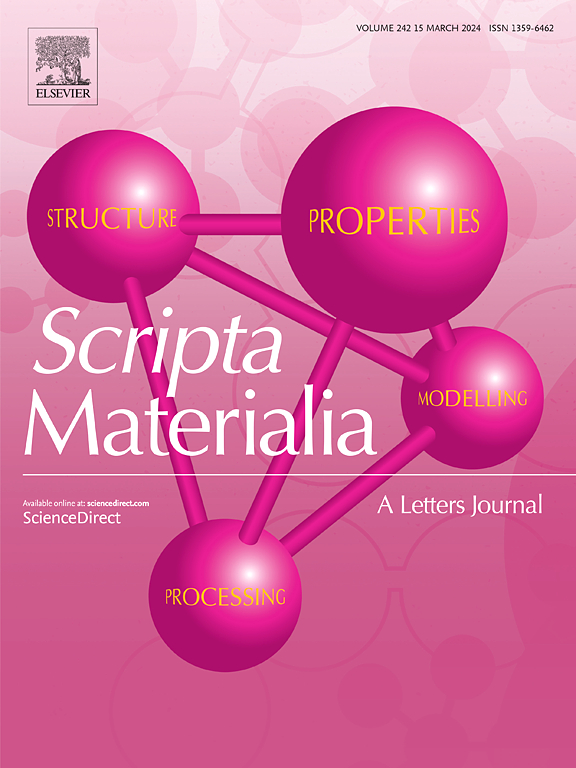面心立方锆相生长激发 Zr3Ge 次生纳米粒子内的复杂不规则堆积断层
IF 5.3
2区 材料科学
Q2 MATERIALS SCIENCE, MULTIDISCIPLINARY
引用次数: 0
摘要
在此,我们首次报道了在 600°C 高温压缩时,Ge 改性 Zircaloy-4 (Zr-4) 合金中的四方 Zr3Ge 次相颗粒 (SPP) 内产生了复杂的不规则堆积断层。原子尺度观察结果表明,复杂不规则堆积断层(CISF)呈现出非共面变形构型特征。沿[001]Zr3Ge 方向观察时,在三个不同的晶体学平面上观察到原子偏移:(100)、(010)和(110)平面,换句话说,这种缺陷是由 Zr3Ge SPP 三个不同平面上的超晶格本征堆叠断层的重复和连接形成的。根据 Zr3Ge 及其周围析出物之间的晶体学取向关系,我们提出了一个力学模型来揭示这种 CISF 结构的本质。研究证实,CISFs 可归因于相对较低的堆积断层能和附近两个 FCC-Zr 相生长的共同作用。本文章由计算机程序翻译,如有差异,请以英文原文为准。
Complex irregular stacking faults within Zr3Ge secondary phase nanoparticle stimulated by face-centered cubic zirconium phase growth
Here we report, for the first time, complex irregular stacking faults were generated within tetragonal Zr3Ge secondary phase particles (SPPs) in the Ge-modified Zircaloy-4 (Zr-4) alloy when subjected to high-temperature compression at 600°C. Atomic-scale observations indicated that the complex irregular stacking faults (CISFs) exhibit a non-coplanar deformation configuration characteristic. When viewed along the [001]Zr3Ge direction, atomic shifts were observed on three different crystallographic planes: (100), (010) and (110) planes, in other words, this defect was developed by the repetition and connection of superlattice intrinsic stacking faults on three different planes of the Zr3Ge SPP. Based on the crystallographic orientations relationships among the Zr3Ge and its surrounding precipitates, a mechanical model was proposed to uncover the nature of such CISFs structure. It confirmed that the CISFs can be attributed to the combined effects of the relatively low stacking fault energy and the growth of two nearby FCC-Zr phases.
求助全文
通过发布文献求助,成功后即可免费获取论文全文。
去求助
来源期刊

Scripta Materialia
工程技术-材料科学:综合
CiteScore
11.40
自引率
5.00%
发文量
581
审稿时长
34 days
期刊介绍:
Scripta Materialia is a LETTERS journal of Acta Materialia, providing a forum for the rapid publication of short communications on the relationship between the structure and the properties of inorganic materials. The emphasis is on originality rather than incremental research. Short reports on the development of materials with novel or substantially improved properties are also welcomed. Emphasis is on either the functional or mechanical behavior of metals, ceramics and semiconductors at all length scales.
 求助内容:
求助内容: 应助结果提醒方式:
应助结果提醒方式:


